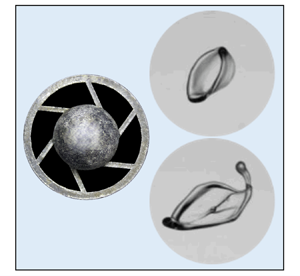Article contents
An experimental investigation of droplet morphology in swirl flow
Published online by Cambridge University Press: 09 March 2022
Abstract

The interaction of a droplet with a swirling airstream is investigated experimentally using shadowgraphy and particle image velocimetry techniques. In swirl flow, the droplet experiences oppose-flow, cross-flow and co-flow conditions depending on its ejection location, the velocity of the airstream and the swirl strength, which results in distinct droplet morphologies as compared with the straight airflow situation. We observe a new breakup phenomenon, termed as ‘retracting bag breakup’, as the droplet encounters a differential flow field created by the wake of the swirler's vanes and the central recirculation zone in swirl airflow. A regime map demarcating the various modes, such as no breakup, vibrational breakup, retracting bag breakup and bag breakup modes, is presented for different sets of dimensionless parameters influencing the droplet morphology and its trajectory. In contrast to the straight flow, the swirl flow promotes the development of the Rayleigh–Taylor instability, enhancing the stretching factor in the droplet deformation process, resulting in a larger number of fingers on the droplet's surface. In order to gain physical insight, a modified theoretical analysis based on the Rayleigh–Taylor instability is proposed for the swirl flow. The experimental behaviour of droplet deformation phenomena in swirl flow conditions can be determined by modifying the stretching factor in the theoretical model.
- Type
- JFM Papers
- Information
- Copyright
- © The Author(s), 2022. Published by Cambridge University Press
References
REFERENCES
- 13
- Cited by



